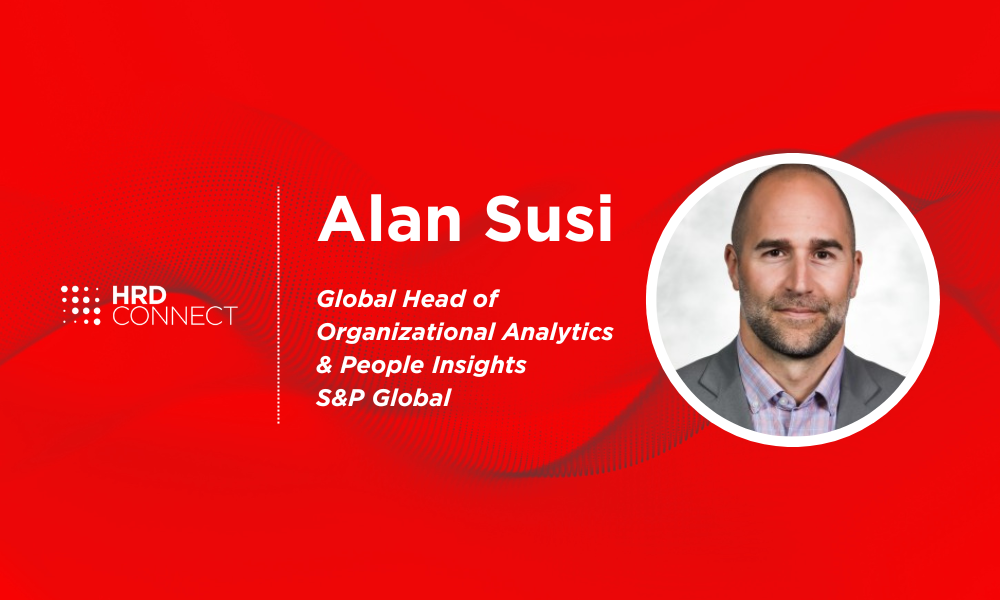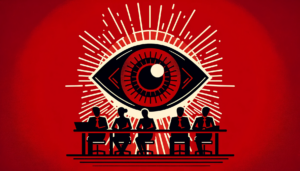Orchestrating organizational health: How to prioritize your HR roadmap
- 7 Min Read
Alan Susi, Global Head of Organizational Analytics and People Insights at S&P Global, offers a Q&A masterclass on orchestrating organizational health to prioritize , from diagnosis to delivery.
- Author: Benjamin Broomfield
- Date published: May 11, 2023
- Categories

Organizational health is a critical concern for HR leaders. The days of workforce planning and designing organizational health strategy based on clunky, annual engagement surveys are – or should be – long gone. Borders between workforce planning, people analytics, and organizational health have become blurred. The result is a confused agenda. HR leaders incorrectly prioritize changes that impede their impact on the holy grails of engagement, attrition, and retention.
In this Q&A, Alan Susi, Global Head of Organizational Analytics and People Insights at S&P Global, shares his insights on integrating workforce planning, organizational health, and people analytics, to create an agile approach to HR that incrementally improves people practices and processes.
1) When working in a consultative position to achieve organizational health, what steps do you take to understand the unique needs and challenges of the organization?
Alan Susi: We treat it as a work design consulting project. This means we start by looking at the business from the outside in. We consider the goal of the organization, the division, the business line, the region, or even the corporate function we are assessing.
We start by gathering as much intelligence as possible including collateral documentation and organizational constructs and ask, how is it designed? What outcomes does it deliver? Is it driving revenue, engagement, or stakeholder building?
We then look at the lens of organizational health against that business outcome. Forget data for a moment. Is it working for the business or is it not? Once we’ve gathered this context, we can then consider what the financial and operational data is telling us.
2) How do you determine your thresholds for key HR metrics such as attrition and onboarding and align them with external benchmarks?
Alan Susi: Benchmarking is something most organizations were doing ten or twenty years ago. Some teams like compensation or benefits still do. But for us, benchmarks are a very simple guardrail. We redefine the benchmarks by speaking to business leaders and the way our organization constructs talent challenges.
For instance, if we look at attrition, we might find a generic number of 25% or 30% annualized. But that might include retail or manufacturing, so we try and get as close to our industry as we can. That figure is also agnostic to the size and complexity of our organization. We try to make sense of the figure given the way we operate and then set a threshold for us to monitor.
So, we’re not just entrenched in one generic external benchmark that might be flawed. We consider the basic statistics we can monitor and break them down by region, area of focus, or job family, to get the right perspective. This approach forces us to focus on why we built our workforce in a certain way.
3) How do you integrate workforce planning , organizational design, organizational health, and people analytics?
Alan Susi: We spend all our time driving the right insights and people analytics to tell a story. The intervention we need to take comes from what the insight is, and what the business is trying to achieve. Based on the insight, we ask, what are the three or four interventions we could make? The intervention could happen in development, engagement, talent strategies, or people movement. To get to the business goal there might be multiple elements involved.
So, for our workforce planning, we say, here’s where we are today. Here’s where we need to get to, this is our gap, and this is how we should intervene.
It’s not a three-year strategic workforce plan to hire X group in Y location. It’s agile workforce planning. We’re constantly looking at our insights and how we can pivot to get to the right place. It’s been a forced mechanism for us over the past couple of years.
4) How do you establish trust and build relationships with stakeholders across different business functions?
Alan Susi: It’s speaking their language. So many people teams focus on their own language. We’re trying to instill an awareness of what the business is trying to accomplish, and what their challenges are. We start the conversation with, how did you create your team? Why is it constructed in this way? What are the challenges you face? Trust comes when they know you’re only interested in them and the success of the business.
Historically, people teams have not been as agile or iterative when developing things. If we’re looking at an analytics dashboard or model, we will go into the conversation with a minimum viable product. Does it answer your core question? Would it take you directionally where you want to go? That buys a ton of trust and belief. If we’re even solving 10% of what they’re trying to do, the partnership develops, and we can build cross-functional teams to solve the issue.
5) What methods or tools do you use to gather data and analyze the organizational health issue?
Alan Susi: I’ve got an agile background, so I use a lot of “five whys” or Pareto charts. But in reality, it’s just asking a lot of questions. And work with the people who keep the business ticking over. Work with chiefs of staff, business managers, HR business partners, or finance partners.
But keep in mind the issue you’re working on might be symptomatic. Get as many diverse views or insights as possible. It’s an inherent part of organization design. People analytics is taking the approach in a new view, and that’s why we call it organizational health. Just like doctors, you constantly running tests and hypothesize potential interventions.
6) How do you prioritize HR initiatives based on their potential impact on the organization?
Alan Susi: That’s where the challenge comes in. With people teams, everything seems like the biggest concern. Your engagement data is down, people are feeling underdeveloped, careers are temporary, attrition is rising, whatever it might be.
We take an agile approach as a forcing mechanism to prioritize the work that’s the right cost, and ROI, or delivers the right engagement or employer brand impact. We don’t spread ourselves too thin, or we won’t deliver change. It’s a conversation that sometimes business leaders don’t want to hear. But you have to be rigid at times and give people a ‘no’ even when they don’t want to hear it.
7) How will organizational health evolve in the coming years, and how are you preparing?
Alan Susi: We need to learn as much as we can about our impact. But every organization is different and will make its own decisions, especially about remote work, or flexible schedules. Organizational health is going to have to expand its view.
Think about the way you looked at organizational health ten years ago before you used discrete markers. It was likely an engagement survey with very generic questions, run once or twice a year. We need to be listening differently. We need to look at the activities people carry out to understand how work is changing. Best practice is moving towards iterative listening and getting people access to data in the flow of the work-life cycle.
It means you’ve got to get cast a wider net and develop more partnerships with stakeholders. It means getting out of your safe space in people analytics where you just study engagement survey data. You have to become more comfortable with ambiguity, and with having a little less ownership of your data.
________________
Alan Susi is the global Head of Organizational Analytics and People Insights at S&P Global. He is an experienced talent and organization strategist focused on building collaborative people first strategies through innovative business model design and optimization of the organization and its talent for sustained high performance and growth.









